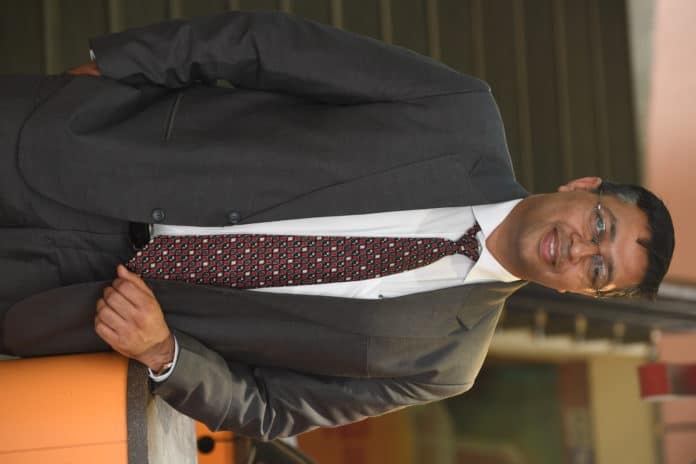What are the latest technical trends and upgrades that leading players are implementing in their solutions? How are these upgrades enabling businesses to grow and drive operational efficiency? Amit Gupta, chief technical officer, Eron Energy Pvt Ltd in an interaction with Electronicsforu.com Network sheds light on some such queries.

Q) In your opinion, which are the top 3 technologies that are shaping the future of IoT? How are they influencing the future of IoT?
Before we talk about the solutions and technologies, the three fundamental customer expectations should be addressed by using whatever technologies available today at hand. They are:
- The total cost of solution deployment at scale: Not as a piecemeal hardware solution, or only communication technology or only cloud platform. Customer wants complete solution with clear visibility on ROI for every dollar spent, including cost of deployment and maintenance. The era of IoT pilots is over.
- Reliability and security- Data from IoT system should reach the platform – 100 per cent (RF protocols and Antenna design) and securely (hardware, software-based authentication)
- Edge analytics – Machine learning implemented on the constrained end nodes is the next IoT frontier.
Q) Between the cellular and NB-IOT/LPWA families of wireless technologies–which one are you betting upon? Why?
All will coexist. As I spoke earlier, customers are looking for a reliable, cost-effective solution. IoT is a big umbrella and would be used to solve unique problems, therefore multiple technologies would cater to subsets of the solution.
On one side we have the LPWAN world, Sigfox with its 12 bytes of data to WiSUN mesh protocol, high data rates and low operation cost. On the other side is the cellular equivalent – NBIOT and LTE/5G. Cellular deployments generally have a higher recurring charge unless some telco does a major price disruption.
Each camp has its own merits and demerits. The key decision points to choose between any one of them would be:
- Overall solution cost
- Data velocity
- Battery life
Q) How’s the development of standards (or lack of it) affecting the adoption of IoT?
If you breakdown the IoT solution into its major components, we have a set of standards available for each block, e.g. mechanical block has IPx standards, hardware design depending on the ecosystem has its own building blocks. There are standards available on communication, security and cloud, and huge standardization effort is also being done for smart city deployments.
In spite of all these standardizations, we still have so many possible combinations. Standards are great but solutioning is a different ball game, each customer has its own unique requirements and SLAs to meet many a time beyond standards, that is the most important problem to solve.
Q) How ready is India’s tech eco-system to develop and deploy IoT solutions?
India is a prototype nation. Many Indian companies are working in the area of IoT. Mostly services companies are collaborating with big system integrators who have won bids for smart city projects. Typically, the hardware is sourced from China or other cheap locations, Indian IoT scenario, therefore, restricts to providing cloud platform and integrating with the chosen hardware.
Leaving the hardware bit for others is risky. Recently a report confirmed that around 600K Chinese GPS trackers are compromised because of the default password setting and therefore need to be taken off. Unless you have control over all the building blocks, this is clearly not scalable technically or commercially.
The best IoT use case which has reasonable success is a smart electric meter. Where we have Indian smart meter manufacturers and Indian cloud operators. I think Indian meters are feature-rich and cheapest in the world, however, there is a limited communication skill, hence 100 per cent data never reaches the utility. This industry is maturing and hopefully, in coming years these challenges would be sorted out.
The biggest disappointment, however, has been the VC world. There is a resistance to fund hardware-based IoT start-ups, even when clear business case with healthy ROI can be seen clearly. VCs in India are more focussed on start-ups which are more software-oriented as the general feeling is that it’s low capex and safe. However, in IoT, hardware cannot be wished away, and investing only in platforms or AI alone won’t take them anywhere. Unless Indian companies get serious funding to develop world-class solutions at low cost that can be scaled, we’ll just be doing pilots here and there.
Lastly, the design and testing facilities, especially for RF and antenna during the design phase, are very expensive and the results are not consistent with global testing labs. The government can play a major role here.
Q) Do you foresee India’s tech industry developing its own IP and branded products/solutions in the IoT arena?
Absolutely. There is so much innovation possible while solutioning an IoT product, right from mechanical design to antenna design, communication to testing and manufacturing processes, communication protocols, AI/ML algorithms.
IoT, as I mentioned before, is a tough nut to crack. However, once the competency in building blocks has been achieved, India can be world leaders in IoT. The requirement is to fund IoT companies who are building these competencies and are working on projects which can have huge deployments and benefits to justify the business case.
Q) How do you see the role, technologies like AI/ML will play in the evolution of IoT solutions?
AI/ML is the path forward. These technologies would bring the major disruption in the way we do IoT today. With high computing power available at low cost, low power consumption, this opens a lot of possibilities to run ML on the edge itself and lots of other data streams can be combined at the cloud level to analyse data from multiple viewpoints.
Immediate success is already being seen in the area of vision, speech, sensor data analytics for anomaly detection. Imagine 50 billion IoT devices generating data – unless we have models to derive insights into the ingested data, we can’t deal with so much data. Therefore, AI is the way forward.
Q) What’s your opinion on the state of security available for IoT solutions? How do you see the evolution from here on w.r.t threats and countermeasures?
Security is the key. One of the biggest deterrents for IoT adoption is the low confidence customers have on the security and integrity of the data. This is absolutely essential in IoT for critical infrastructures like smart cities and smart utilities.
Security can be addressed at the hardware layer, communication protocol, physical layer, application layer and of course, is a function of cost and use case. The weakest link is moving data from the end node to the cloud.
Data accuracy is the key to decision making at any stage. Therefore, data generated by the device has to be secured. Today DTLS/TLS security is also possible on the data generated, if there is underlying security, then this brings an additional level of security.
Certificate-based authentication is another method by which the data generated by the device can be trusted. At the device, a management client sits on the device to ensure it is securely identified, enables secure communication to the cloud service and secure management of the device itself. Cloud security is fairly advanced, and all the major platforms also ensure the highest possible security.
Q) W.r.t. edge vs cloud–where do you think will we see faster development in the next year or two?
These are two different worlds! As of today, “cloud has an edge” because of high scalability and compute power, almost unlimited power and bandwidth. Whereas edge is a constrained environment. Great progress is being made at the edge level too. Today we have almost equivalent frameworks available for AI as they are on the cloud. The future would be to be able to harness the power available at both cloud and edge as per the solution demands.
Q) What are the key technologies missing, which when made available, will accelerate adoption of IoT across the globe?
I think a lot of work still needs to be done in the end-to-end development and testing frameworks for the solutions that have been dished out.
Q) Any thoughts on where to go edge versus where to go cloud?
More data streams, more complex computing go the cloud way. Real-time constrained environment takes the edge route.










